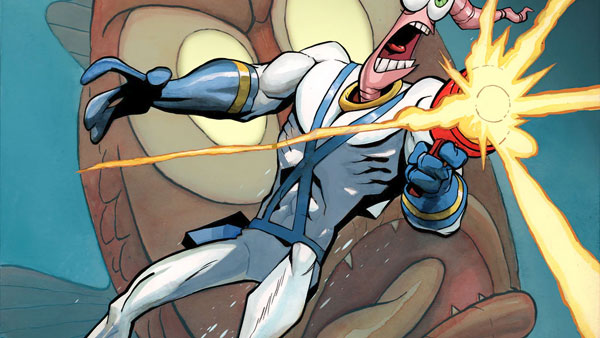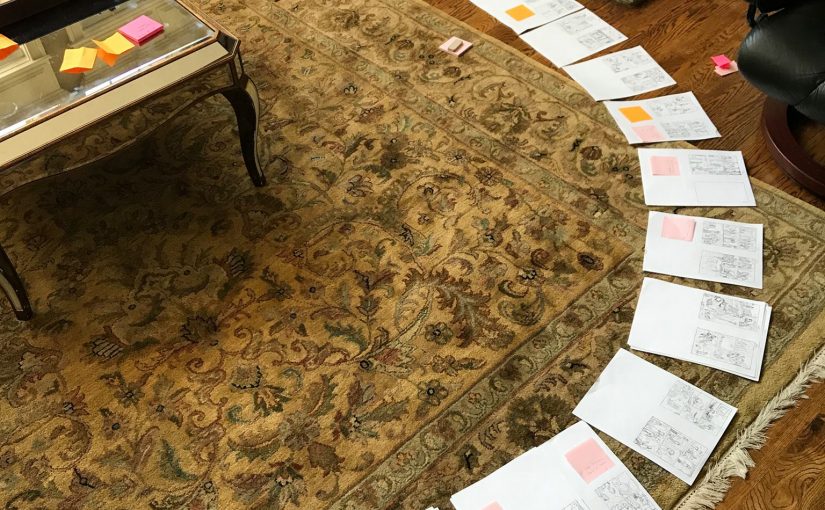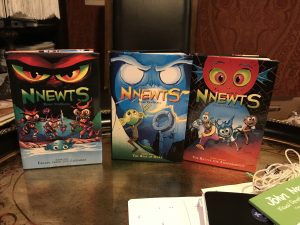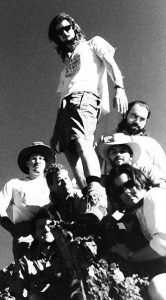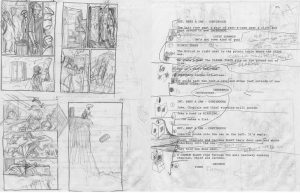When I was growing up, I loved story. That’s not a unique statement because I think nearly everyone loves a good story. It’s in our blood. How else do you explain our appetite for so much entertainment, even our conversations with each other are essentially stories we tell each other. And we all know good story tellers who intuitively know how to edit out the boring parts of their lives to get to the good meat of the conversation and present the good stuff. We also know of people who are in love with their own story but don’t know how to tell it very well, or meander through off-topic details and bore us. Both the good story teller and the bad storyteller went to the mailbox only to find a pile of bills, but one makes hearing the story a joy and the other bores us to death.
I fell in love with Disney movies, TV shows and great books and anything I love, I love doing. So I came into telling stories without knowing I wanted to be a story teller. I thought I wanted to be an animator and a comic book artist. But what I really wanted was to tell my own stories. It just took about twenty years to figure that out. I’m a slow learner.
G.K. Chesterton said, “Anything worth doing is worth doing badly.” I started telling stories through comics and animation and my stories were pretty bad in hindsight. As an artist, I was always able to nail the look of my characters and I knew to make their personalities interesting. But making a character and setting them into a good plot are two different disciplines. A good character is like a car with nowhere to go. When you give that car somewhere interesting to go, you have something beautiful.
My basic story structure ideas were gleaned from my culture, it’s actually much older than that, but it largely comes from the over arching idea that everything has a beginning, middle and end. The way we put those three components together is the spine of any story. Here are a few links on breaking down my story thoughts:
Basic Story Structure in Under 5 Minutes
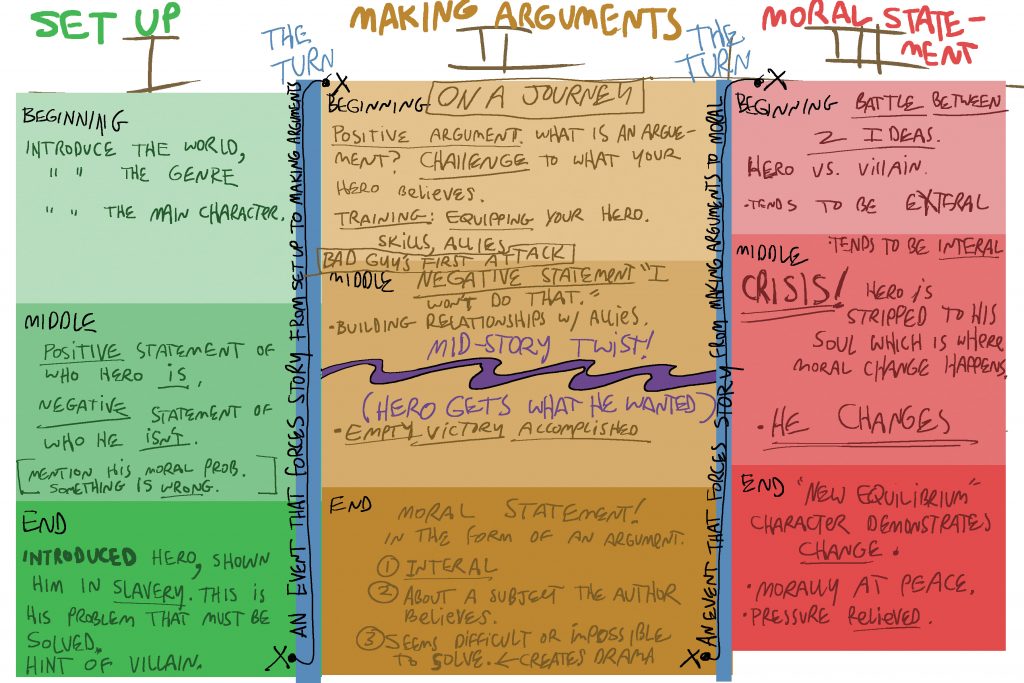
Basic Story Structure with visual
That is a pretty formulaic view of story, and it’s not quite a science. There is always lots of room for innovation, but I use structure to keep me out of trouble and to give me some place to start. No matter if I’m writing story or painting a picture, when I begin by throwing out the rules I don’t get transcendence, I get mud.
Here’s an image of my last graphic novel script, strewn across my living room floor with post it notes marking dialogue notes. I can follow a perfect structure and there is still a lot of fixing to do. Those 3″ x 5″ note cards in front of the fireplace are the basic three act story structure broken down into major moments:
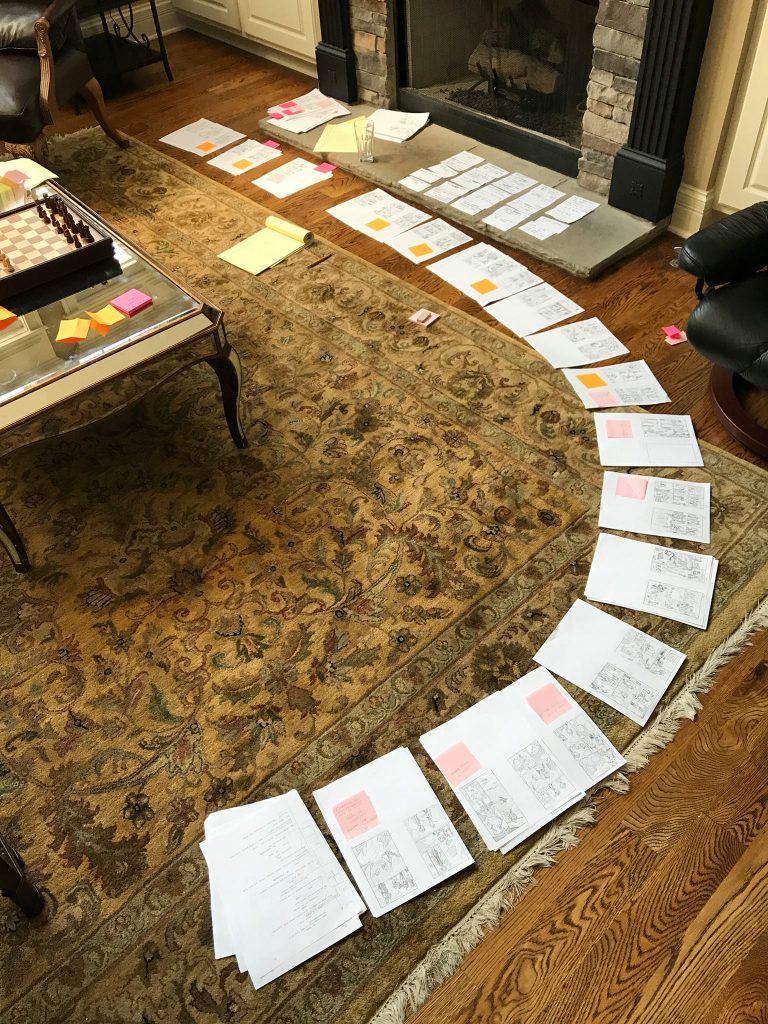
Aside from the rules and regulations of story, I found there is always something going on underneath the words. It’s what I call the why of story. It’s this why that makes us feel anything because without the why it’s just a bunch of words. All of us can write words, but it’s the why that gives them more impact and can touch our soul or subconscious to make us feel things. To circumvent the mind and get past the watchful guards of the audience’s gates is part of what makes storytelling so powerful.
“But supposing that by casting all these things into an imaginary world, stripping them of their stained-glass and Sunday school associations, one could make them for the first time appear in their real potency? Could one not thus steal past those watchful dragons? I thought one could.” -C.S. Lewis
While I’ve studied the why of story for years, I tried to boil it down to the basics in under five minutes. This is my goal for most of my writing notes, because I get bored from ten hour lectures on story, I want to get to the point! Here is the quickest overview I could manage on the big why:
The WHY of Story in Under 5 Minutes!
You’ll often hear me rant about the three act structure. In reality, the three acts are the minimum requirement of a story. There are four act structures and I’ve seen eight act story structures. There are two act plays. But one thing all of these different act structures have in common that they have a beginning, middle and end. I believe this is the true act structure regardless of how many breakdowns we choose to reverse engineer into them.
I also see them as three different stories. Each act has a job and 90% of the good stories I’ve read follow this breakdown. Here is my explanation:
Why 3 Acts are 3 Different Stories
Any time I read a book, my mind naturally starts slamming story into categories. That could be me just practicing confirmation bias, but the pattern keeps arising. Another of the patterns I see is that a main character has a problem, but usually has a separate but related need. In my early writings I made the character’s problem and need the same, and it telegraphs too much information to the audience and it loses dimension. Here is my breakdown on problem vs. need:
Problem vs. Need
I started drawing before I had memory of it. My mom remembers me always drawing, even when I could barely walk. I find art a great relief, but it is an exhausting medium to master. I’ve been blessed to have this many years to figure out how to draw and I feel like I’ve only just begun. Story is not unlike any other art form, I have a lot to learn and it is frustrating to see how far off I am from mastering that medium. I assume I’ll still be learning how to write when I’m 80. I’m a lot closer to mastering everything I need to know about driving than I am at mastering artistic things like marriage, painting, writing or even video game design.
For more research on my mass media entertainment, check out my IMDB page:
https://www.imdb.com/name/nm0855066/
I give lots of live instruction while working in my studio on my Facebook page:
https://www.facebook.com/dougtennapel/
To read my stories, please pick up one of my books on Amazon:
https://www.amazon.com/Doug-TenNapel/e/B001K7Z214
And finally, check out my official website here:
http://dougtennapel.com/
